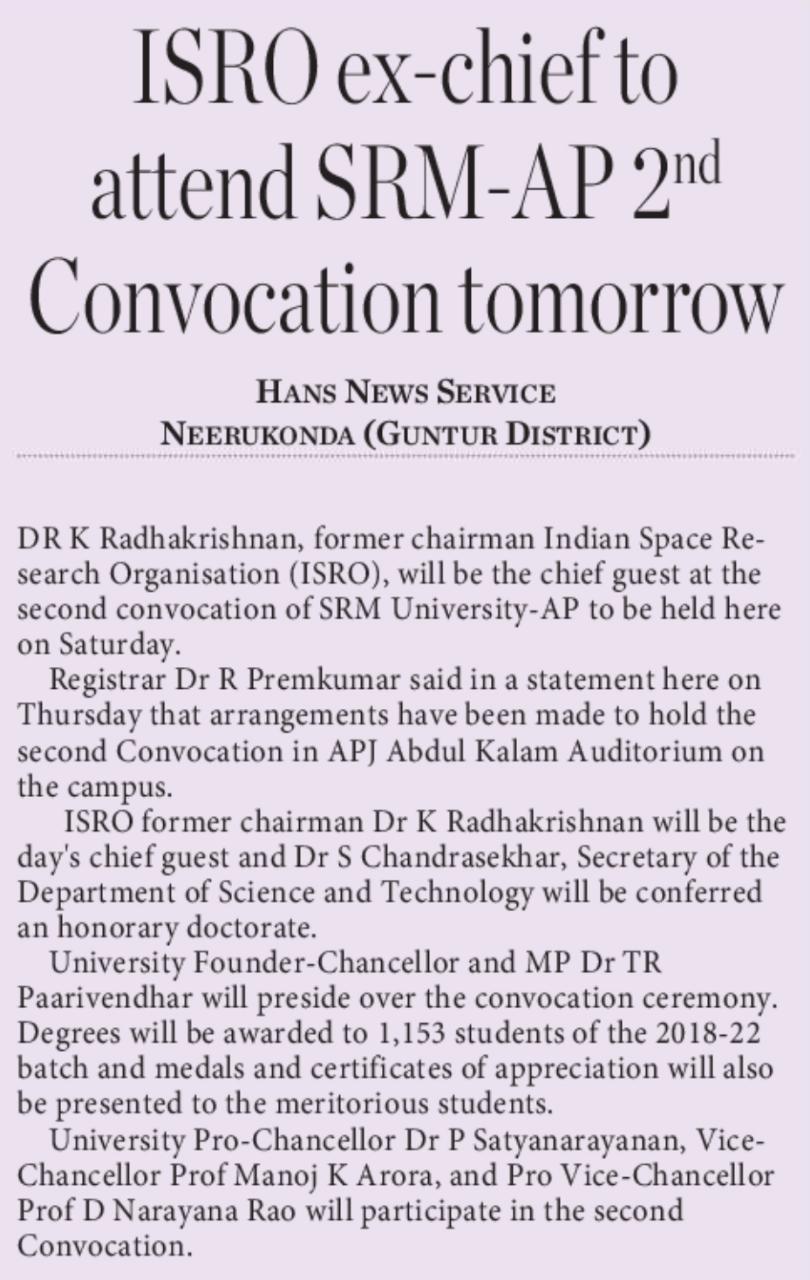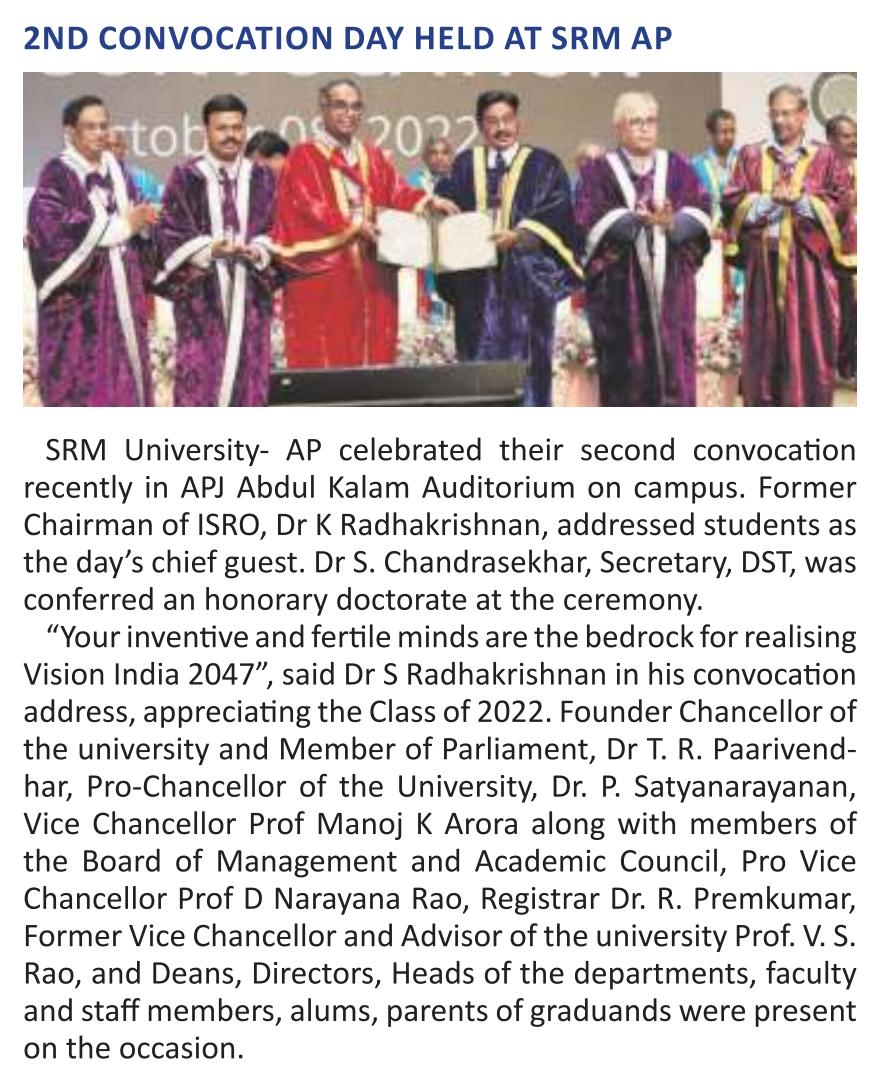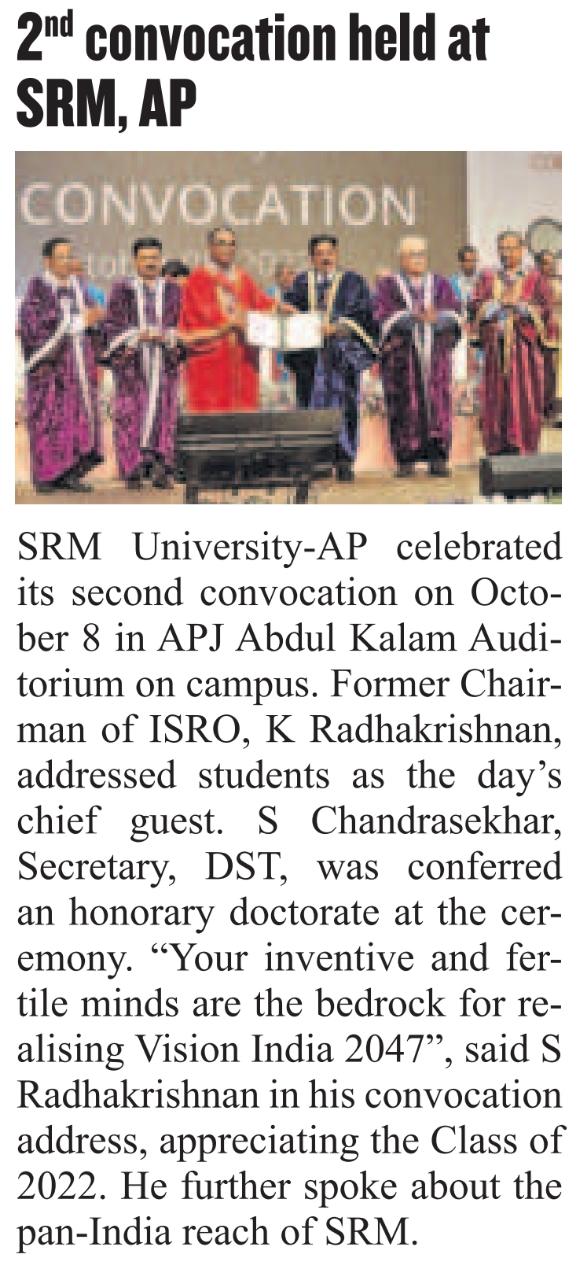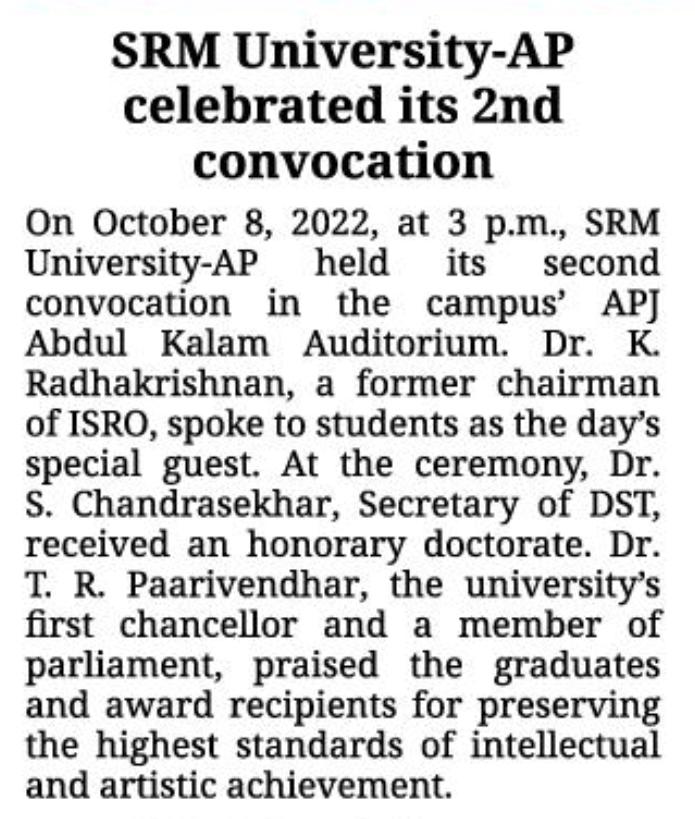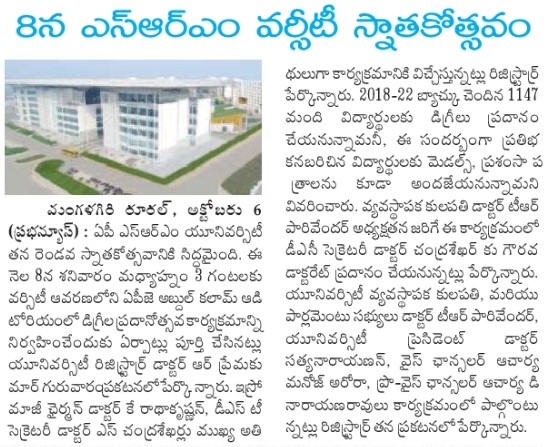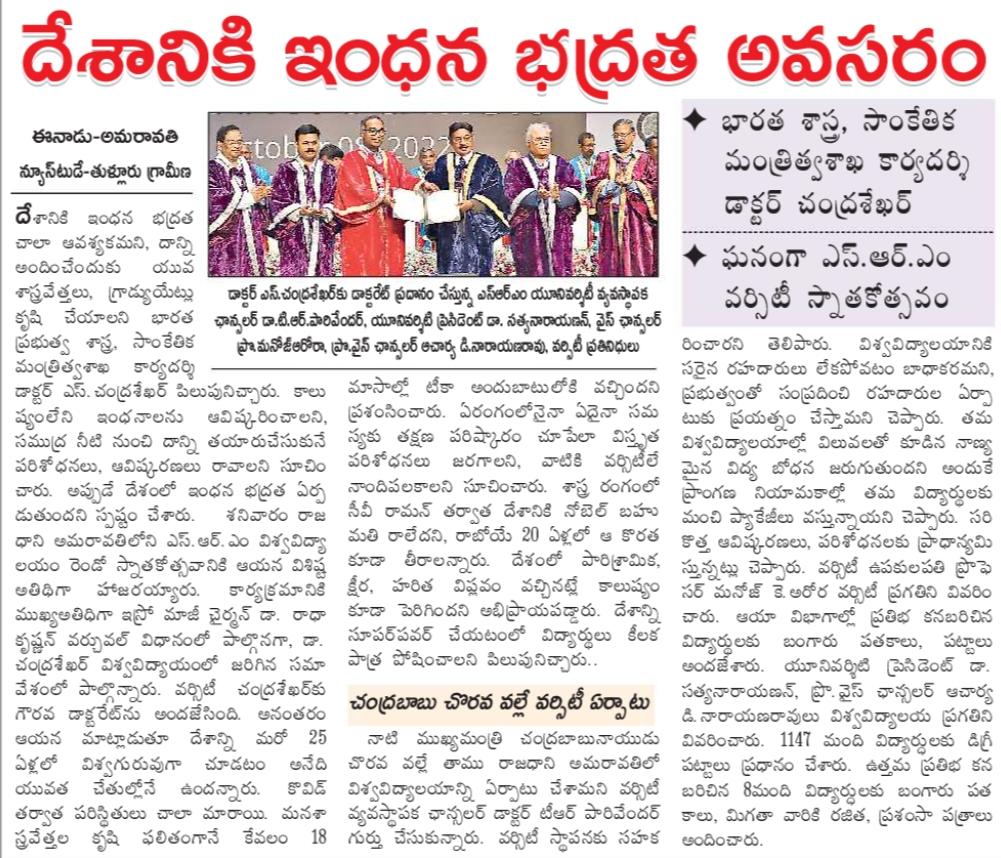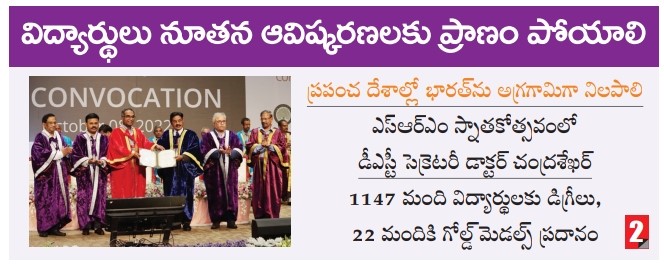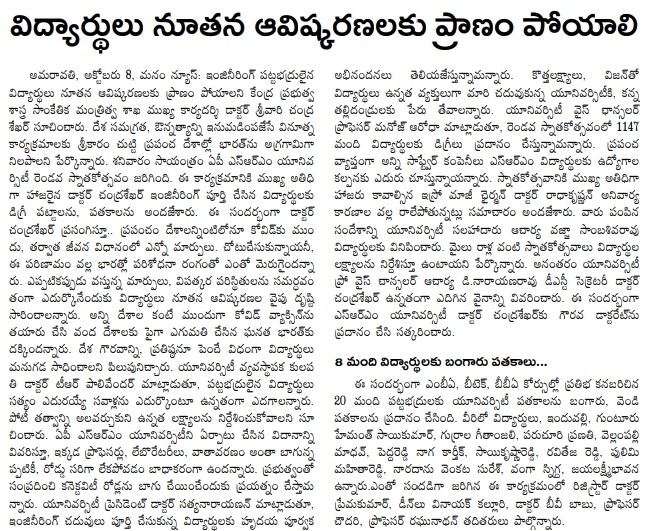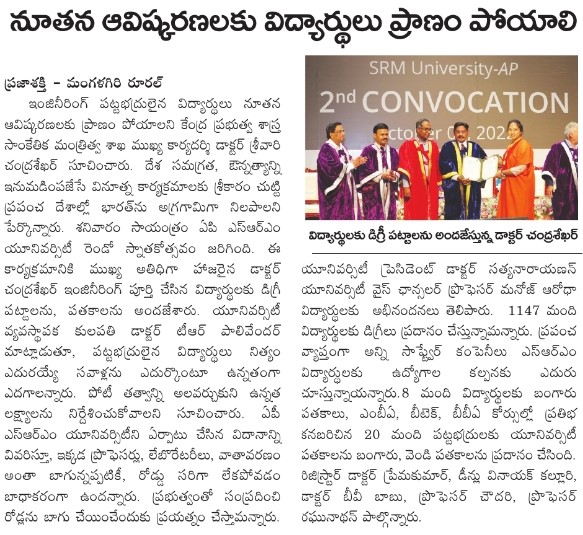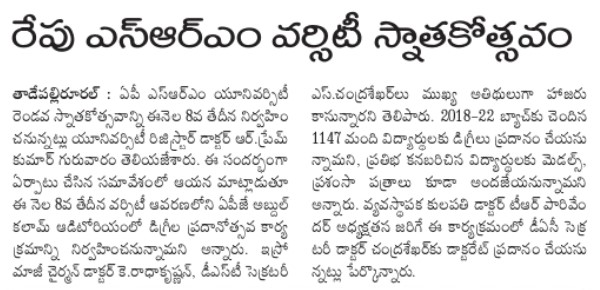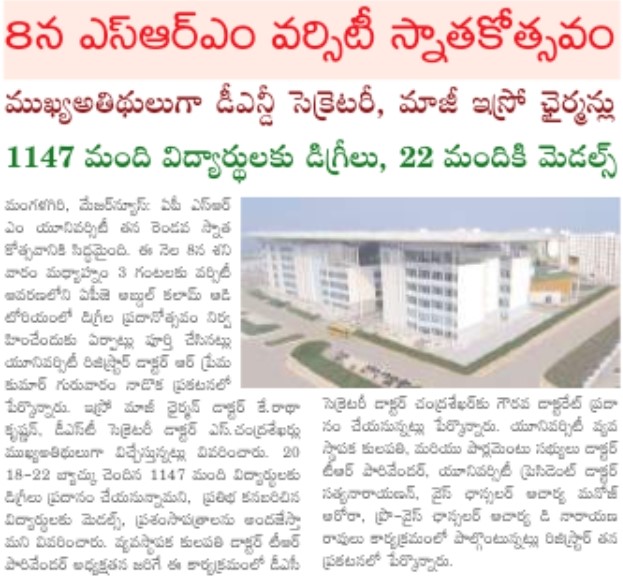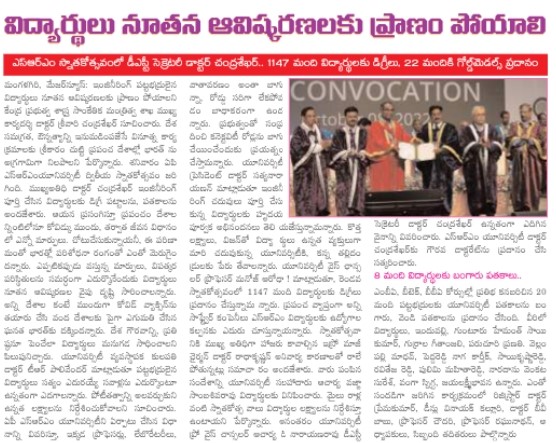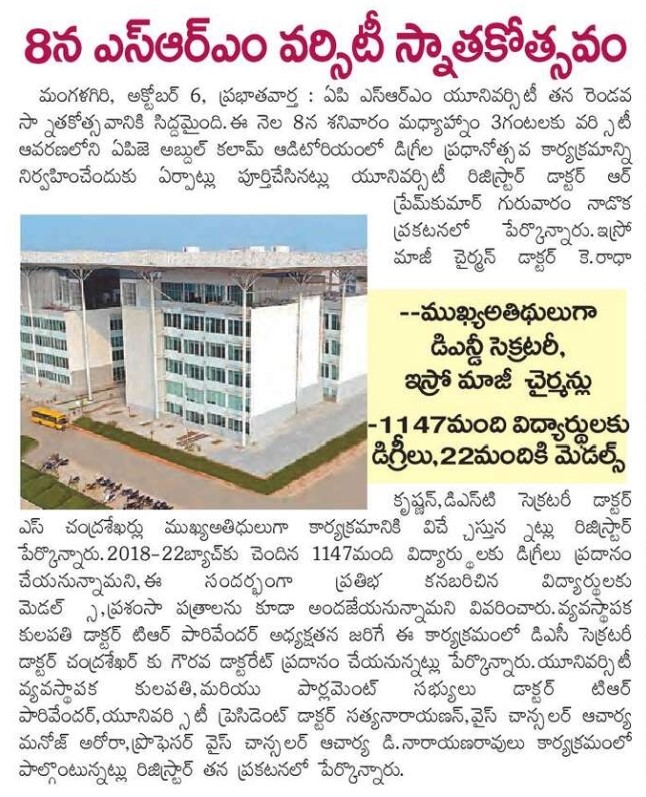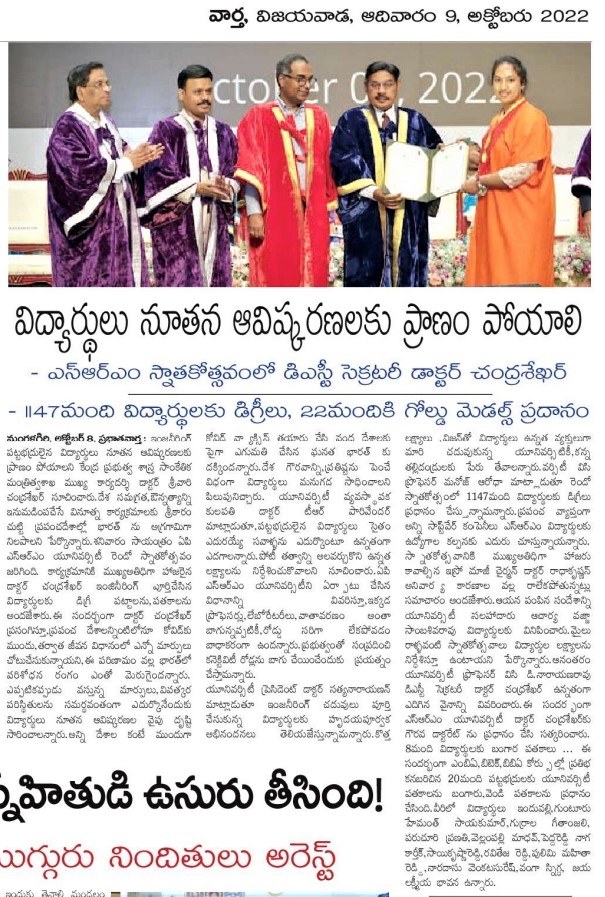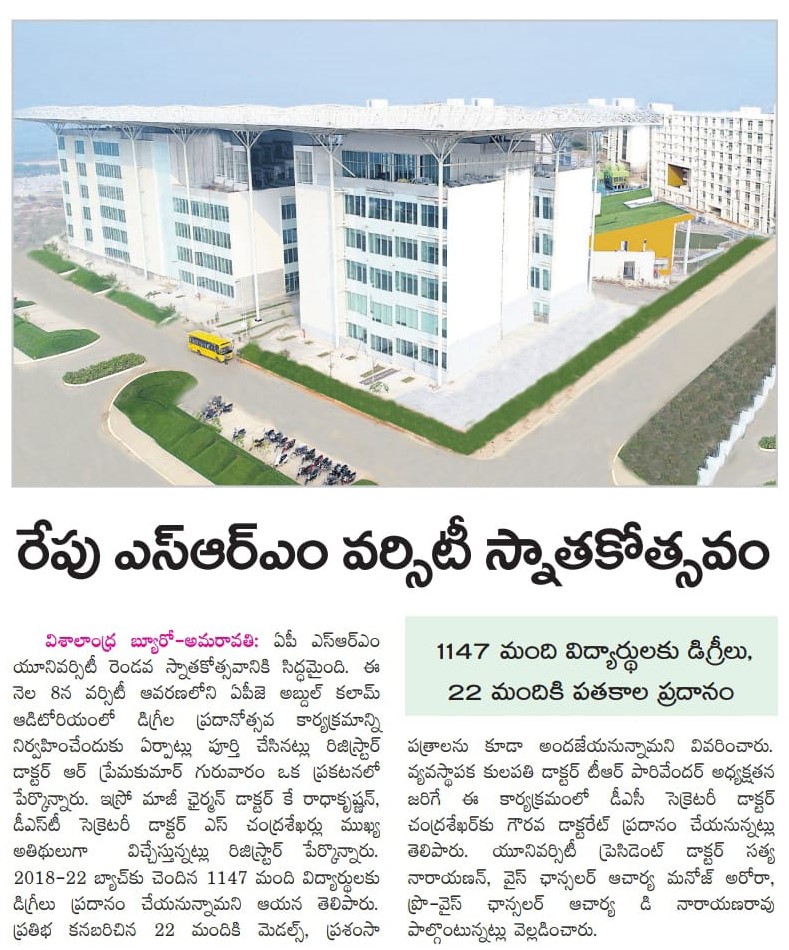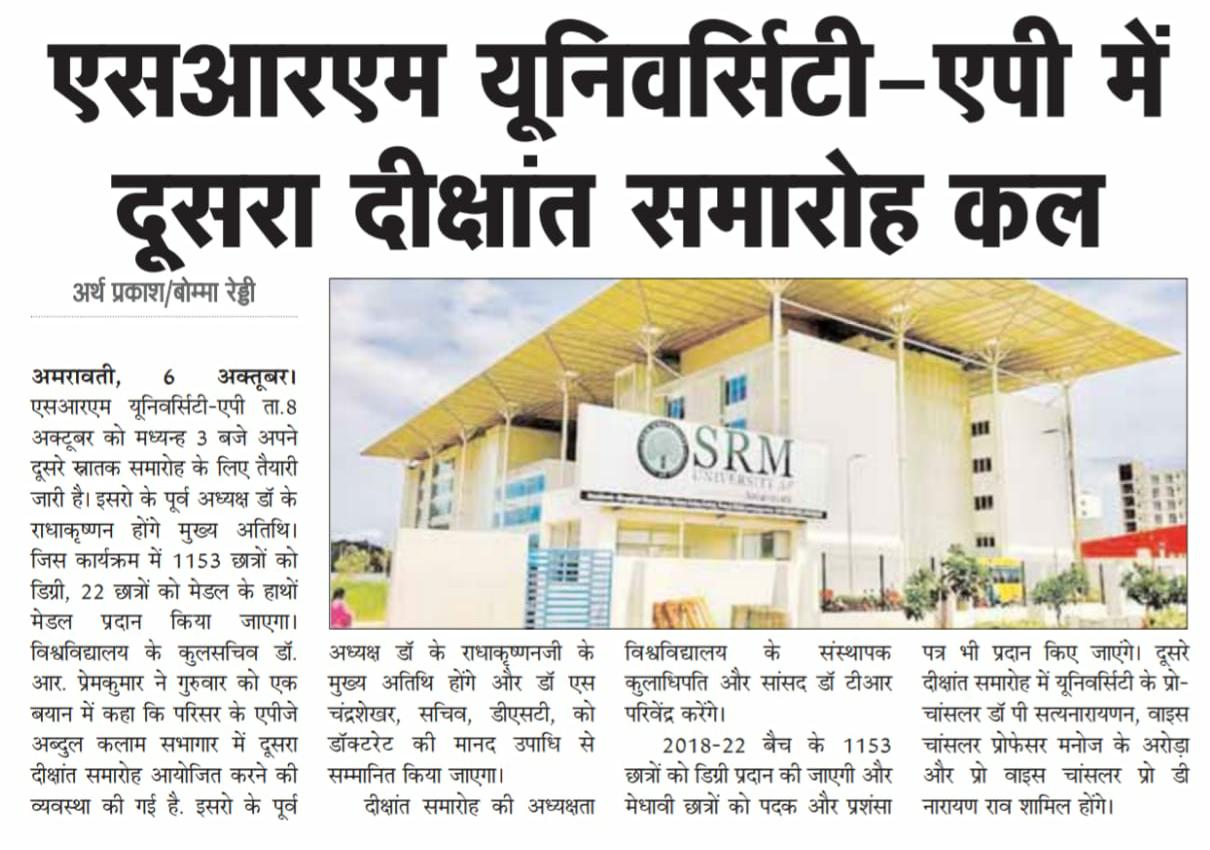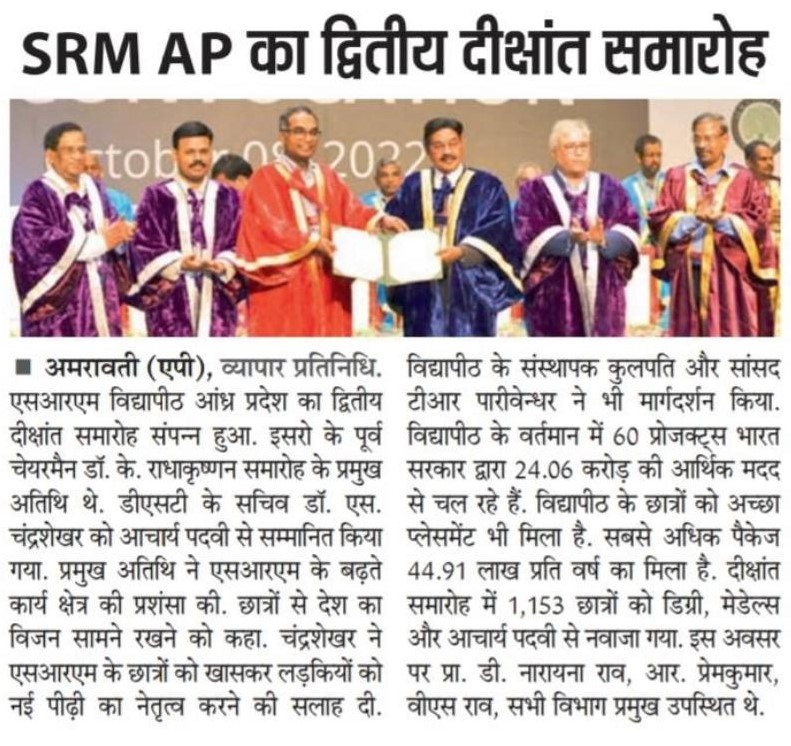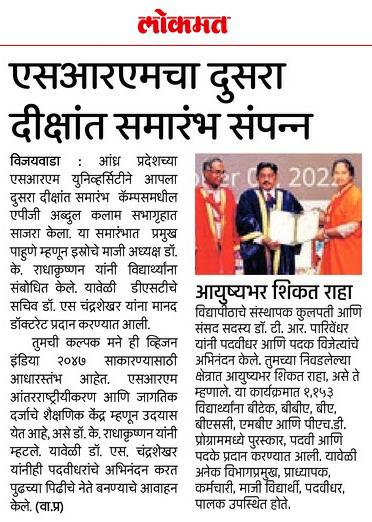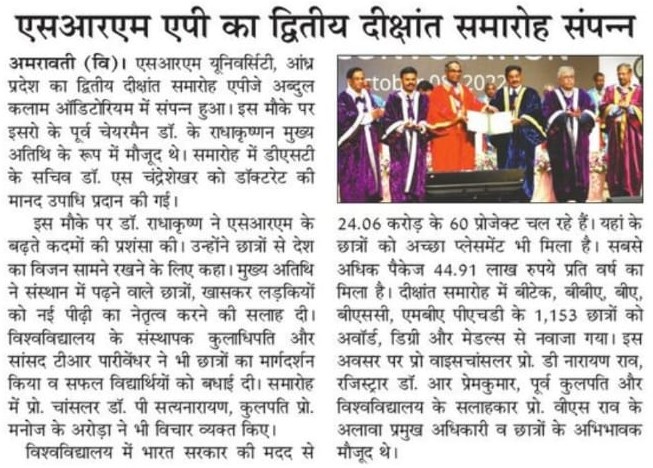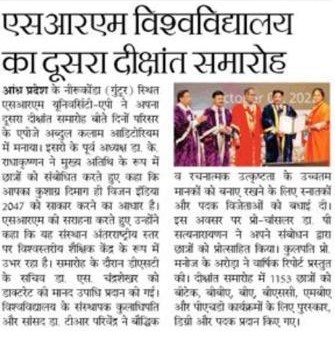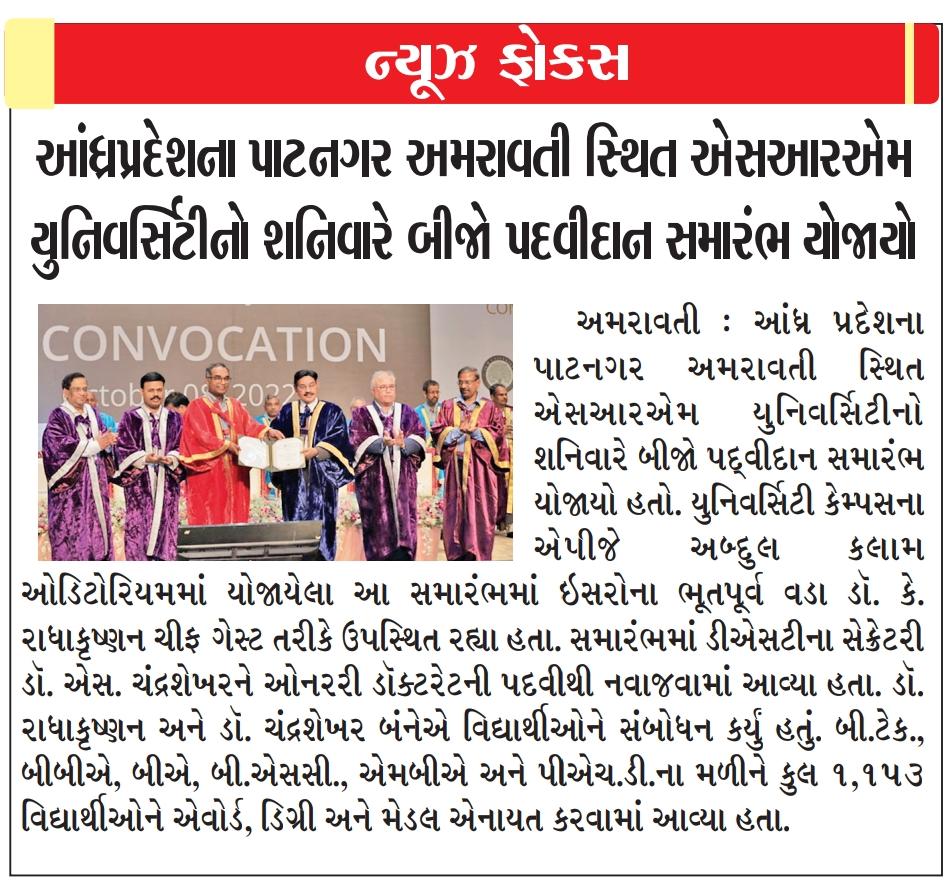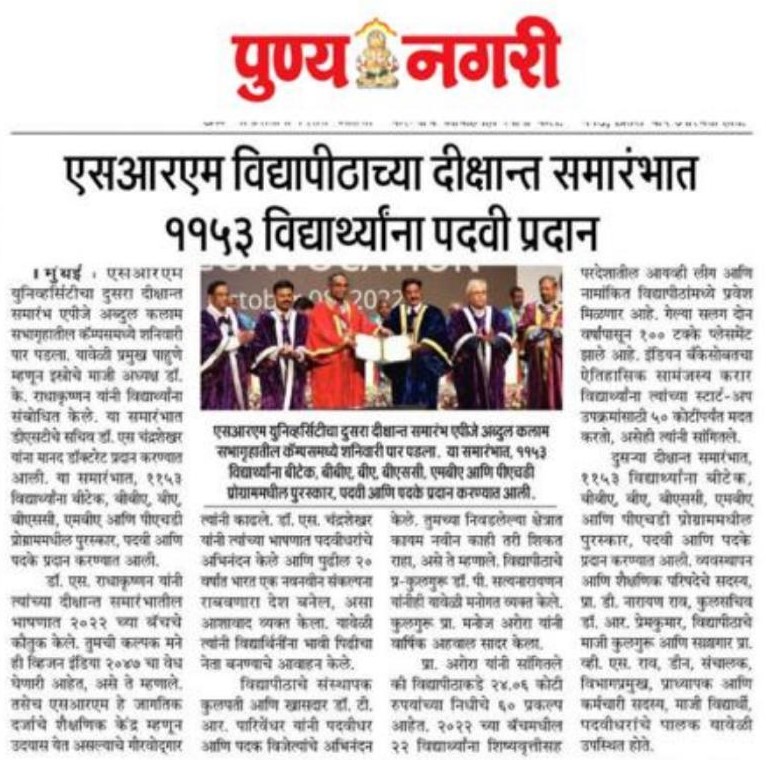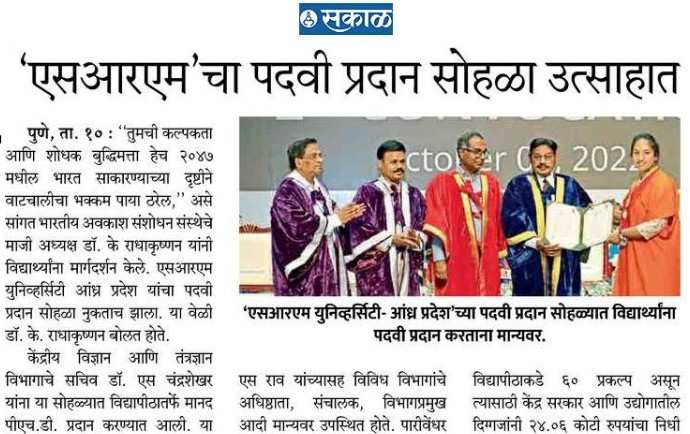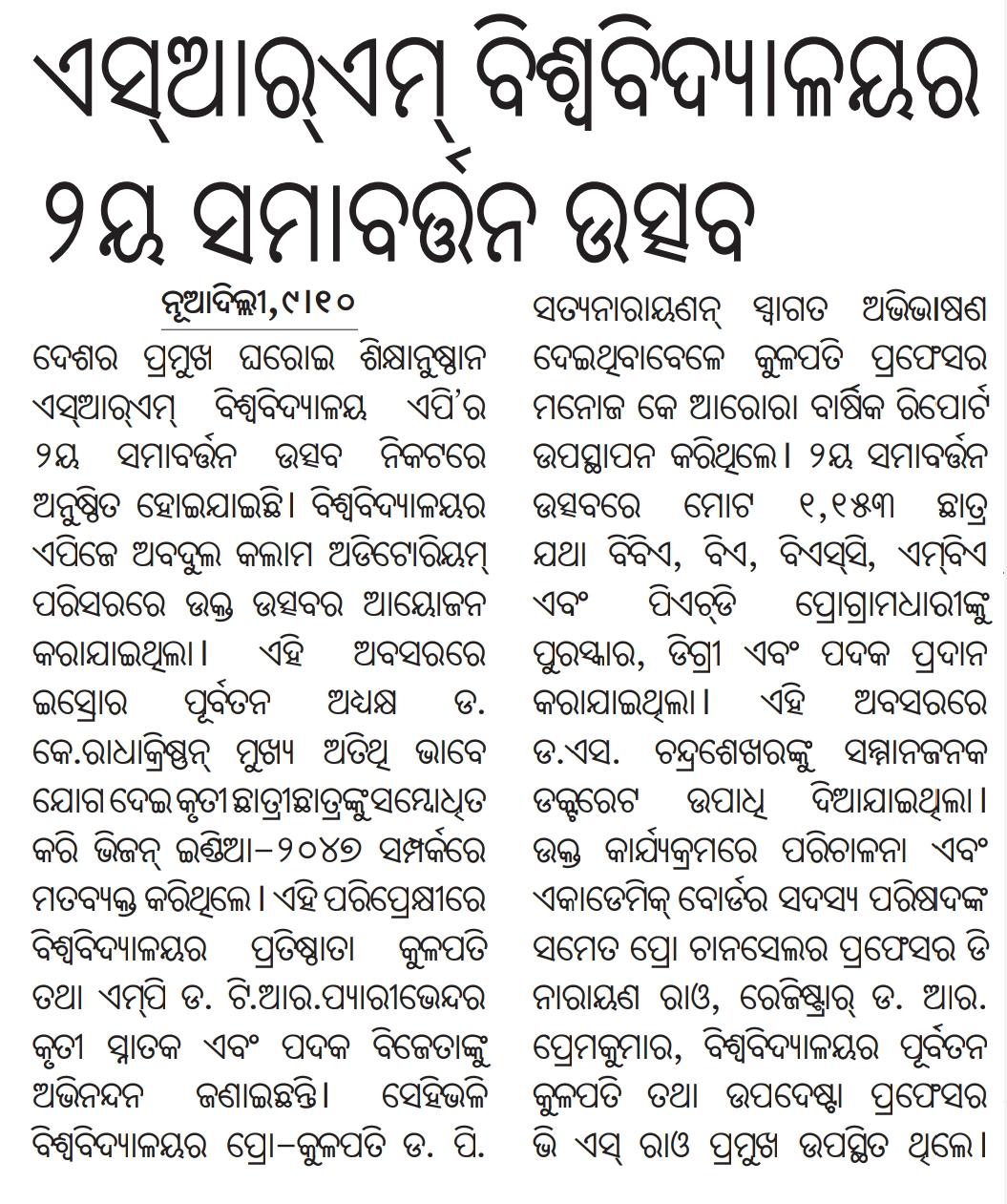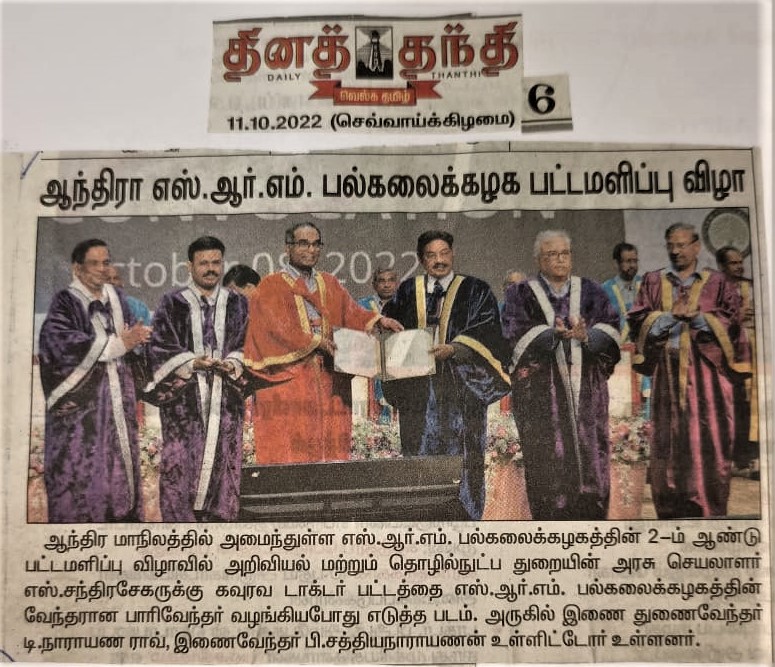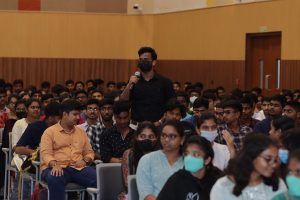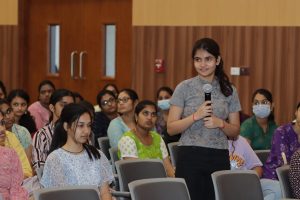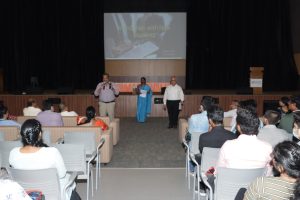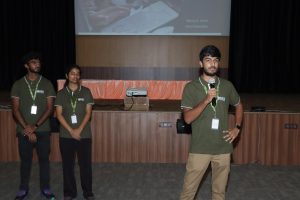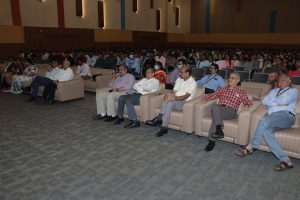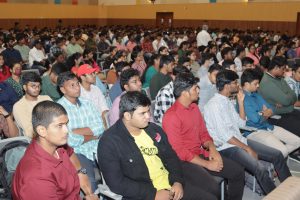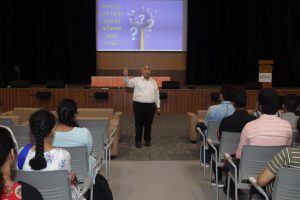All Management Events
- Paving the pathway for higher studies abroad October 14, 2022
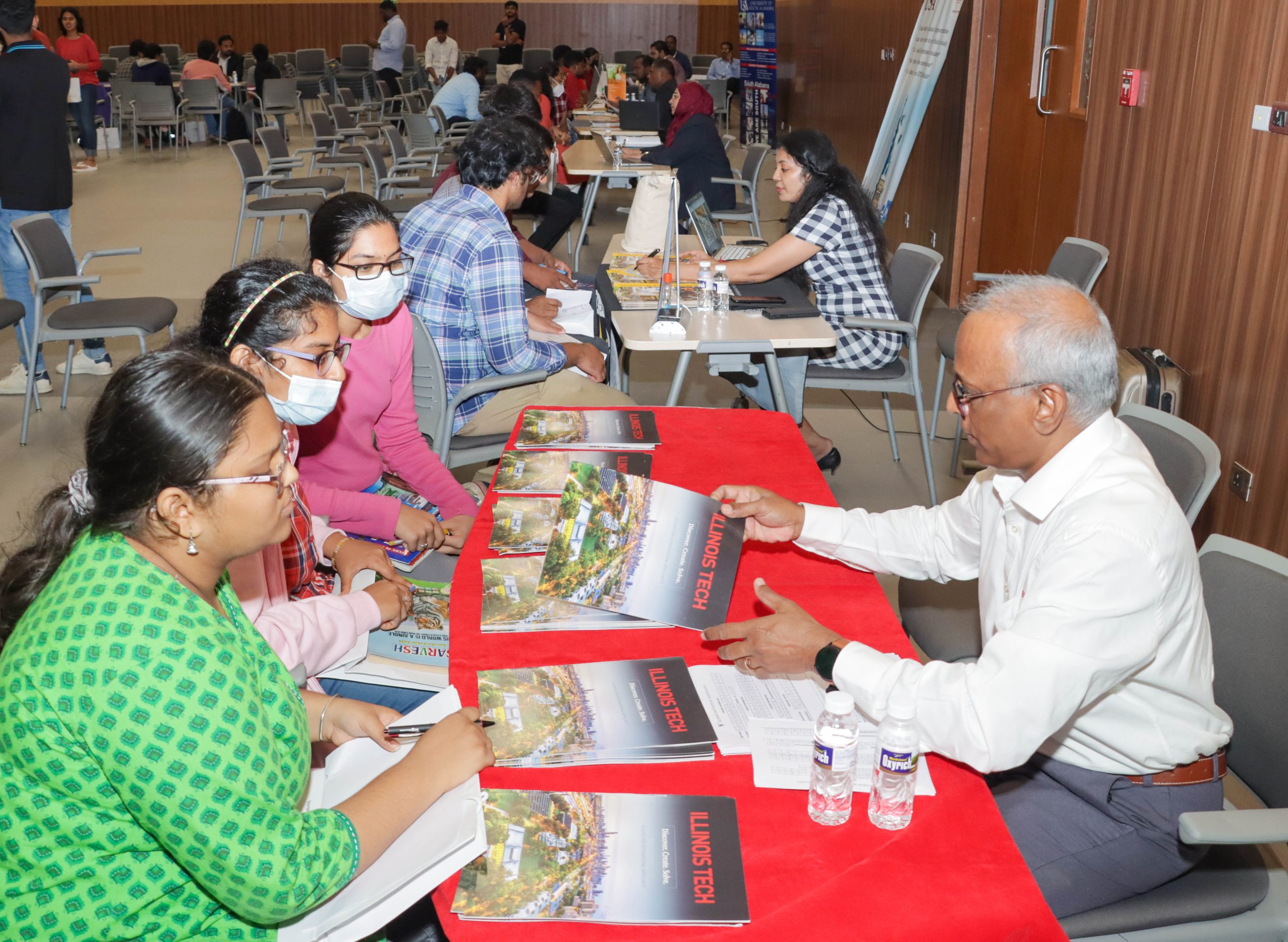
The Directorate of International Relations and Higher Studies organised international education fairs on October 12 and 13, 2022, to introduce students to the vast opportunities of abroad learning at top-notch universities. Global Education Fair 2k22, conducted in collaboration with IVY Overseas, featured premier universities across the UK, the USA, Canada, and Australia, and Overseas Education Fair 2k22, partnering with AECC Global, acquainted students with the leading universities in the UK and the US.
An extensive array of universities, including the James Madison University, University of South Alabama, University of Hartford, Manhattan College, etc., participated in the education fairs and notified students of the numerous programmes available across the disciplines such as engineering, sciences, arts, and management.
Education fairs are enriching opportunities for students to connect with the right spokespeople and gather a fair idea about the various prospects of abroad studies. Having a broad picture of the opportunities available will make the preparatory process easier for students. “The education fair has been extremely helpful to get a detailed overview of the pre-requisites of various universities and manoeuvre my preparation accordingly”, commented Kavya Sree, a Computer Science Engineering student.
SRM University-AP maintains a consistent interface with education abroad experts to assist enrolling students in prestigious overseas universities. The university boasts of its enormous list of students who have made it to high-ranking universities with exciting scholarship offers. “I have already been associated with the university and have no qualms about the calibre of the students. An opportunity to associate with SRM AP is indeed rewarding,” remarked Swapna Parsa, the South Indian Programme Manager for the QS World Ranking universities.
The Directorate of International Relations and Higher Studies spares no effort in providing the students with the right opportunities. The office caters to the requirements of all aspiring students and gives them the right guidance at every step of their preparatory process. Education fairs, awareness sessions, training programmes and coaching for IELTS, TOEFL, etc., are a few of the events organised by the directorate for the students.
Continue reading → - 2nd Convocation October 13, 2022
- Pitch 101: Incubating innovatory startup solutions October 12, 2022
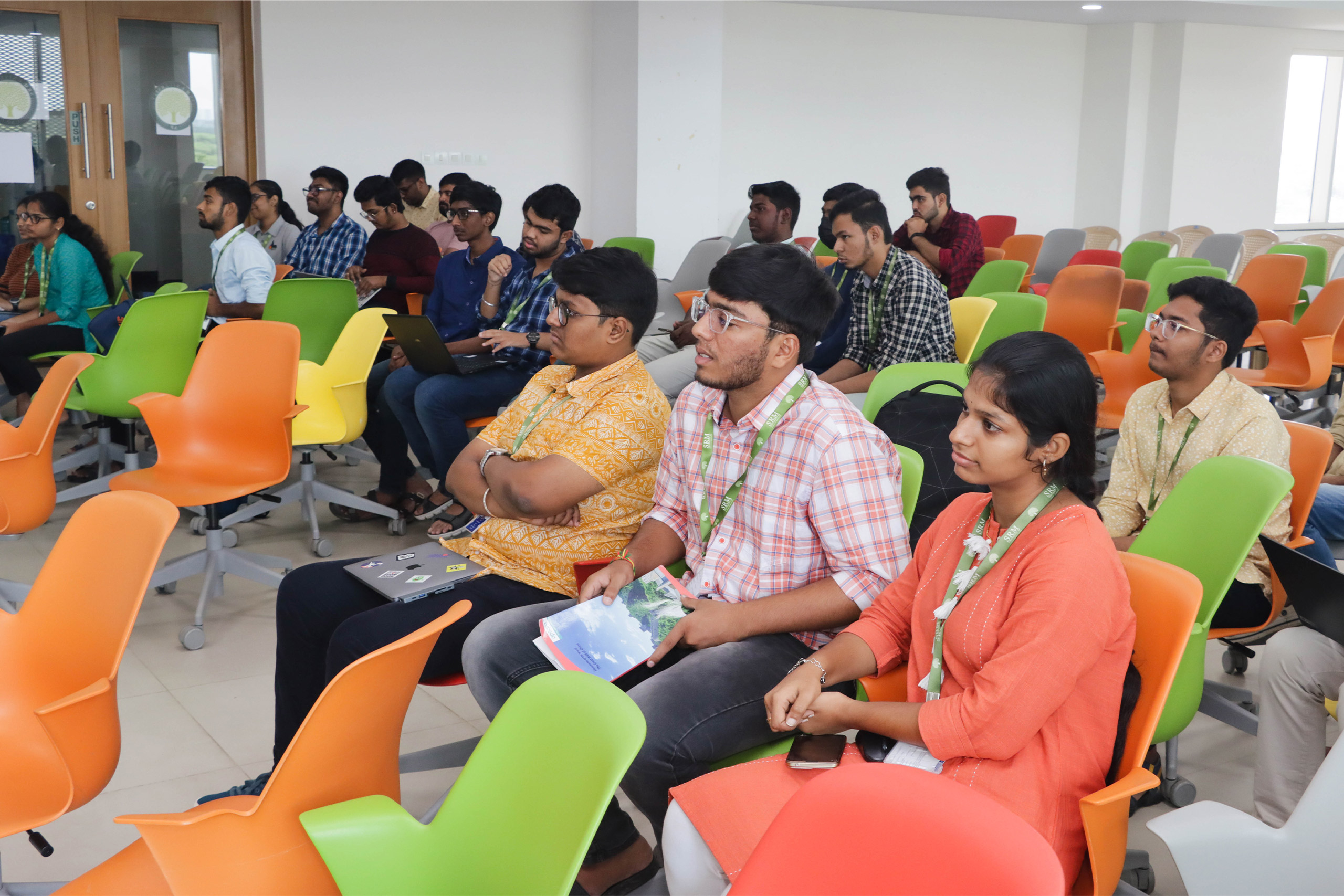
The Entrepreneurial Innovation Lab (ENNOVAB) at SRM University-AP has been the vanguard of student entrepreneurship and innovation. They have been organising inspiring sessions like Enrio, Ennote, Pitch 101, etc, to promote students in their entrepreneurial ventures.
In the recent session of Pitch 101, brought forth on October 12, 2022, students, and faculty of SRM University-AP came together to share their ideas and thoughts on launching revolutionary startups. The event was conceived to invite interesting startup ideas across various technical and non-technical domains, such as Fintech, IoT, Telecom and Media, Banking, Insurance, etc. Excellent ideas were rewarded with exciting prizes.
“Entrepreneurship is a culture, and we are here to support your dreams and ideas”, affirmed Prof B V Babu, Dean – School of Engineering and Sciences, inaugurating the session. Associate Director – Entrepreneurship Mr Udayan Bakshi encouraged students to grow from being job seekers to job providers. Associate Dean-in-Charge (Engineering) – School of Engineering and Sciences Prof T Ragunathan, and Assistant Professor Dr Dinesh Reddy were also present on the occasion.
Pitch 101 was introduced to instigate ennovab sessions that may serve as a one-stop solution to learn and experience ideas and plans and help know the specifics of entrepreneurship and building a startup.
Continue reading → - Prof Rathinasamy Maria Saleth October 11, 2022
- Dr Prasanthi Boyapati October 11, 2022
- Tunnel Field Effect Transistor Design and Analysis for Biosensing Applications October 11, 2022

The Department of Electronics and Communication Engineering is glad to announce that Mr Garikapati Anith Chowdary, a BTech passed-out student has published a paper in collaboration with Assistant Professor Dr M Durga Prakash. The paper titled Tunnel Field Effect Transistor Design and Analysis for Biosensing Applications was published in the Q2 journal Silicon having an Impact Factor 2.941.
The physical modelling of the tunnel field effect transistor (TFET) is done in this study. The Silvaco TCAD tool is used to design and simulate the TFET structure. The FET device has attracted a lot of attention as the ideal tool for creating biosensors because of its appealing properties such as ultra-sensitivity, selectivity, low cost, and real-time detection capabilities in a sensing point of view.
These devices have a lot of potential as a platform for detecting biomolecules. Short channel effects, specificity, and nano-cavity filling have all been improved in FET-based biosensors. FET-based biosensors are appropriate for label-free applications. Random dopant variations and a thermal budget are seen during the construction of a JLFET. To overcome this problem, the charge-plasma-based concept was established in FETs in this study.
Different metallurgical functions for electrodes were employed in this biosensor to behave as a p-type source and n-type drain. To alleviate the short channel effects, a dual material gate work function for the gate electrode was devised, as well as a double gate architecture. Biomolecules can be neutral or charge-based, and both types of biomolecules can be identified using a proof-of-concept FET-based biosensor. Changes in the drain current (Id) of the device were achieved by varying dielectric values and charges in the cavity region with variable cavity lengths.
Continue reading → - Prof Haribabu Ejnavarzala October 11, 2022
- New student orientation: Interaction with Vice-Chancellor October 10, 2022
Transition from an admitted student to a committed student ready to succeed!
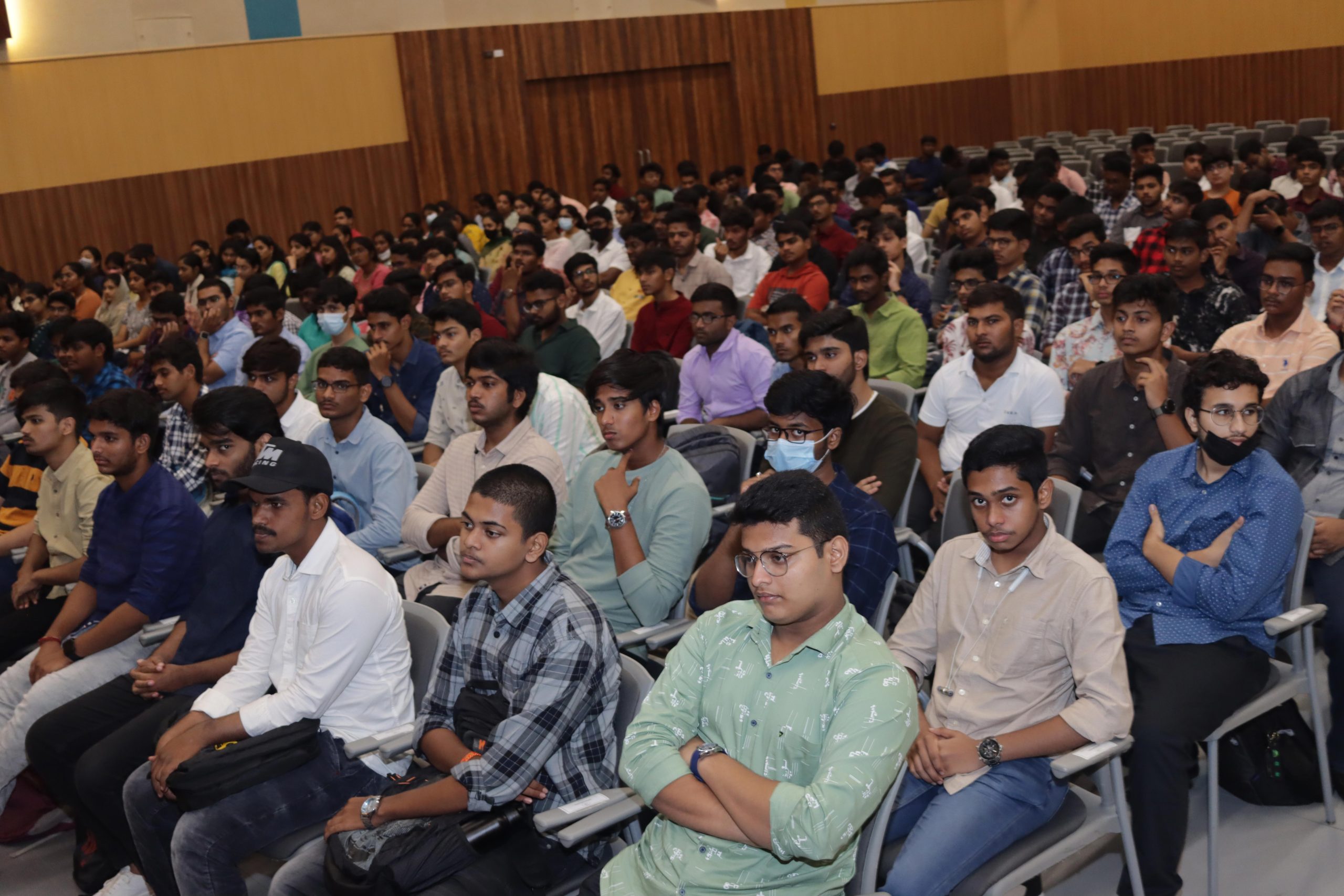
SRM University-AP welcomed students to campus on Monday, October 10, 2022, in an event that commenced at the APJ Abdul Kalam Auditorium. The interactive session with Vice-Chancellor Prof Manoj K Arora aimed for the smooth transition of incoming students to university life.
Students shared their goals and aspirations about the future on the occasion. “I want to be a rocket scientist who’s also a musician”, said Dhruv, a first year Mechanical engineering student. Vinisha, a student from BSc Integrative Biology expressed her dream of becoming a molecular biologist and winning Nobel Prize in future. Several other students also talked enthusiastically about their career goals such as becoming an IAS officer, game developer, artist, software engineer etc. Prof Arora encouraged students to work towards their goals and elucidated how SRM AP can guide them in achieving those lofty goals.
Registrar Dr R Premkumar, Chief Finance and Accounts Officer (CFAO) Mrs Suma N, Director – ITKM Dr K Mohan, Director – Communications Mr Pankaj Belwariar, Director – Sports Dr Vijay Kumar Upadhyay, Director – Student Affairs Mr Anil Kumar Nigam, Associate Director – International Relations and Higher Studies Dr Naga Swetha Pasupuleti, Associate Director – Entrepreneurship Mr Udayan Bakshi, Assistant Director – Student Affairs Ms Revathi Balakrishnan, Dean – Faculty Development Prof Sudhindra Nath Panda, Dean – School of Engineering and Sciences Prof B V Babu, Dean – School of Liberal Arts and Social Sciences Prof Bandi Kamaiah, Dean – Academic Affairs Dr Vinayak Kalluri, Associate Dean-in-Charge (Engineering) – School of Engineering and Sciences Prof T Ragunathan, Medical Officer Dr Ch Lakshmi Rajyam, student counsellors, student council representatives and other members of university executive leadership addressed the students.
Continue reading → - Prof S Irudaya Rajan October 10, 2022
- Prof Rattan Lal Hangloo October 10, 2022


